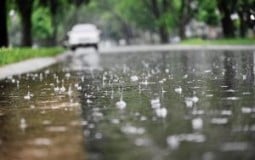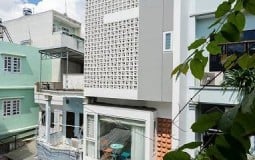Increasing biodiversity was one of the arguments with which the Amsterdammer was urged at the end of 2019 to put a roof garden on his roof. He could get a subsidy for this for a year on condition that his garden is at least 30 m2 large, would exist for at least five years and could store at least 30 liters of rainwater per square meter. Additional subsidy could be expected if the garden was filled with non-sedum plants, such as herbs, special sowing mixtures and cultivars with nectar value, because non-sedum plants have a thicker substrate layer than well-sedum plants. They can barely store water in their ugly layer.
What the municipality primary intended with the incentive scheme did not make the 2019 decision clear. Biodiversity improvement, therefore, and also: storage of rainwater to absorb the increasing summer showers of climate change. But the cooling of the city and of attics were also mentioned. And further: ‘reduction in sound pressure’, although that may have been attributed to bridal veils, vines and ivy plants that were listed as ‘vertical green’ in the decision.
The question is whether many green roofs have been installed. On Google Earth version September 2020, there are not many to be found in the center of Amsterdam and so far the extra water storage has not helped much. It also seems unlikely that the city became a little less warm as a result, although that mainly depends on the definition of the ‘city temperature’. Where is it measured? As usual: chest height on the street? Or above the roof gardens themselves? It will be less hot there in the summer than it used to be, because bitumen (asphalt paper) and ballast gravel can become unbearably hot in the bright sun. Modeling studies (simulations with varying results) only expect a measurable cooling effect from ‘green roofs’ if they are constructed on a very large scale. Other studies call that quite unrealistic. Maybe the vertical green has some effect.
Add a barrel
Anyone who witnessed the construction of a green roof up close discovered a weakness in the concept that had not received any attention until now. In what is perhaps a standard example, four ‘bigbags’ (each of 1 m3) hoisted with earth on a flat roof of 5 by 12 meters. Including the expected water absorption and some additional facilities, this meant an extra roof load of more than 6 tons. Snow can add a ton to that. To make sure that the old roof (built in 1891) could support the mass, the bad roof beams were replaced in time. The ‘earth’, a mixture of slate, lava, bims, brick chips, perlite and compost, was spread 10 cm thick and, according to the supplier, could hold about 39 liters of water per m.2 save. That’s what it’s about. According to the KNMI, an average of 4 mm of water per m . evaporates from standard crops in summer periods2 per day. At a height of 12 meters that is probably 5 mm. This means that bims and perlite lose all their water in about eight days during dry periods. So there has to be continuous sprayed to keep the herbs and culture species afloat. (The sedum tolerates dehydration well.) The green roofs increase the summer water consumption without anyone noticing. And also the winter consumption when the sprinkler system freezes, as happened promptly in the example.
Enough grumbling, a person should be able to see the sun shining in the water. You give everyone their own bims garden with nectar-bearing crops full of cheerful butterflies. And the green roof promotion has now expired. There is now a blue-green roof scheme in which the emphasis has shifted to water storage. The requirements are stricter: the roof garden must have at least 60 liters of water per m . on average2 can store and must be at least 200 m2 be contiguous in size. The little man is left behind here, the blue-green is for corporations and companies. Anyone looking on the internet to see what has been devised in extremely expensive, refined versions, with electronic roof weirs and all that, will lose any pleasure in extra water storage.
While it can be so simple: install continuous formations on the roof of square plastic bins with a 6 cm upright edge and you meet the 60-litre range. Double the rim height and you store 120 liters. Evaporation from a free water surface is 25 percent faster than from standard crops, so the trays are empty quickly enough to absorb new showers. If necessary, provide the basins with drainage holes. Costs nothing, weighs nothing. That biodiversity will come later.













